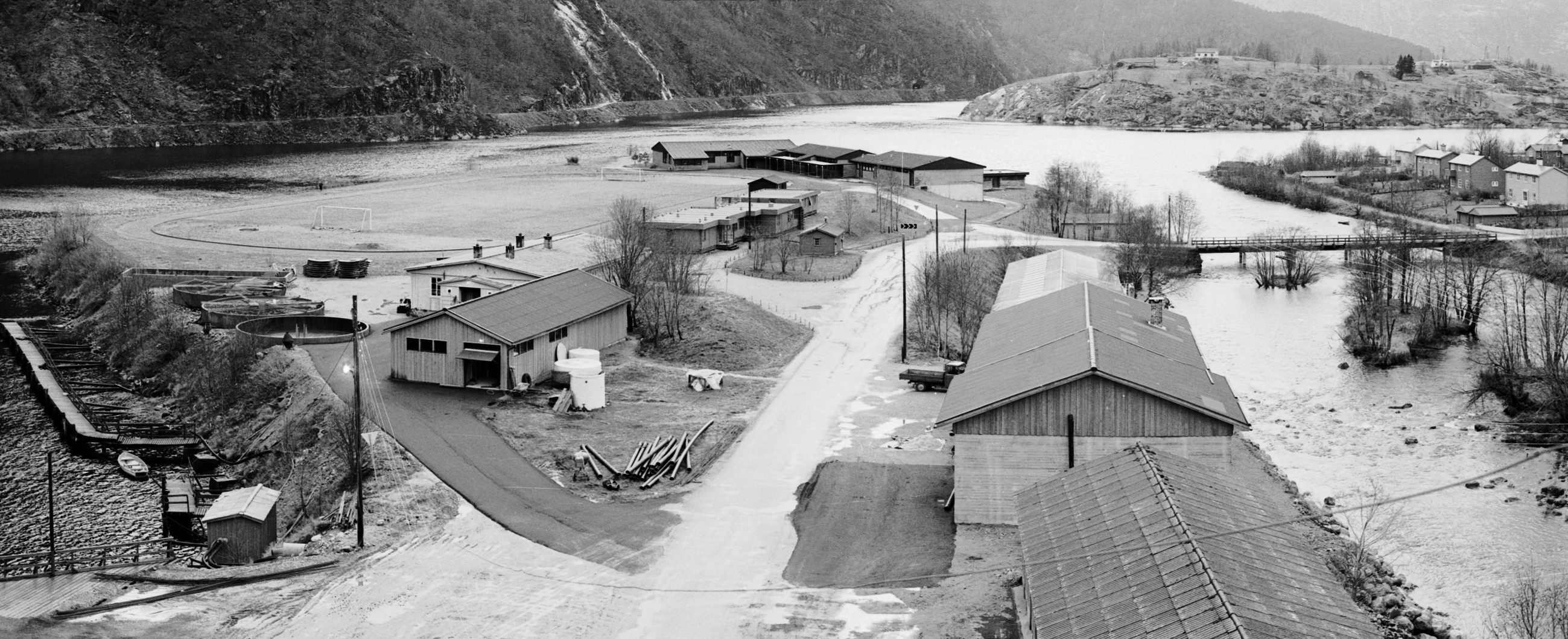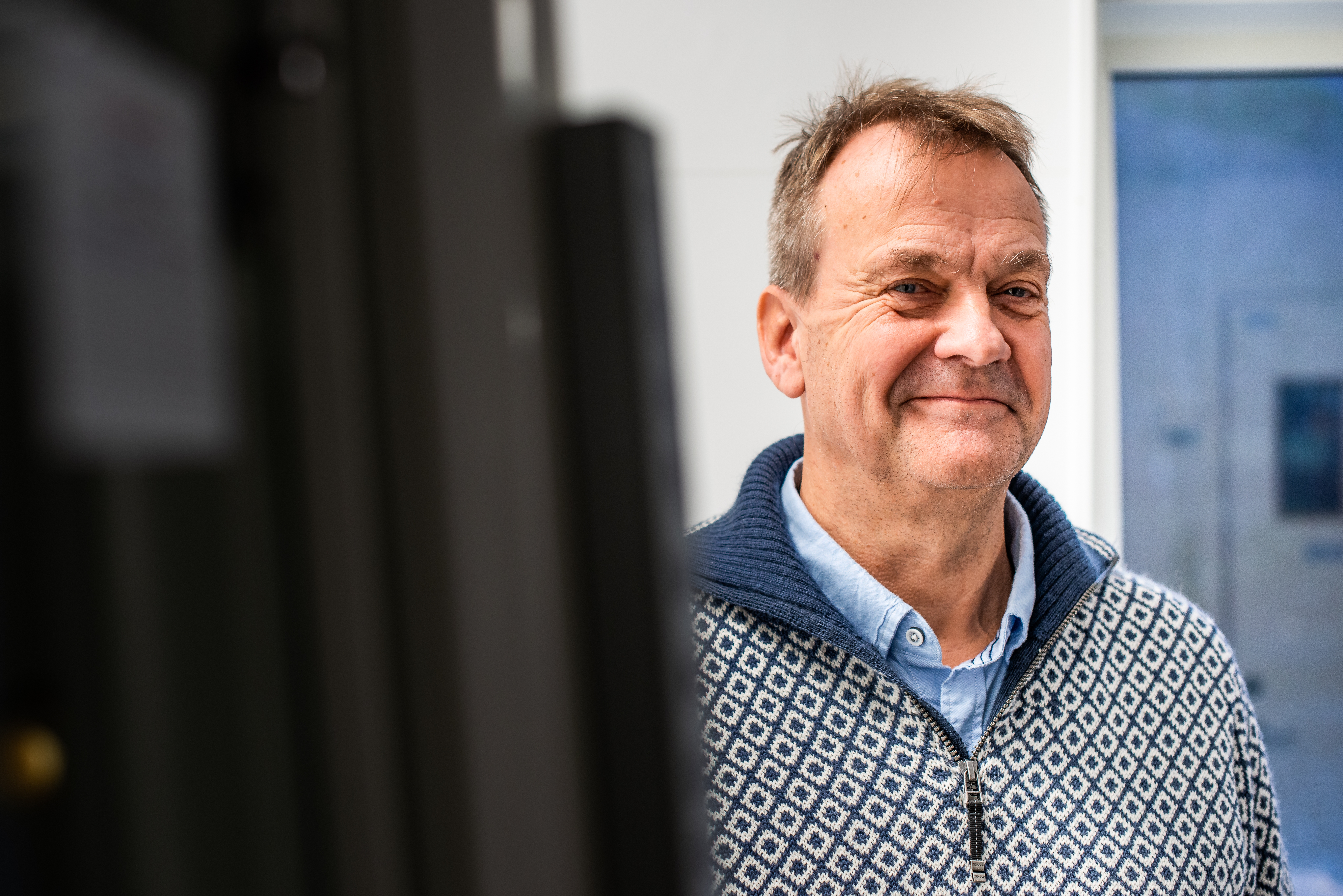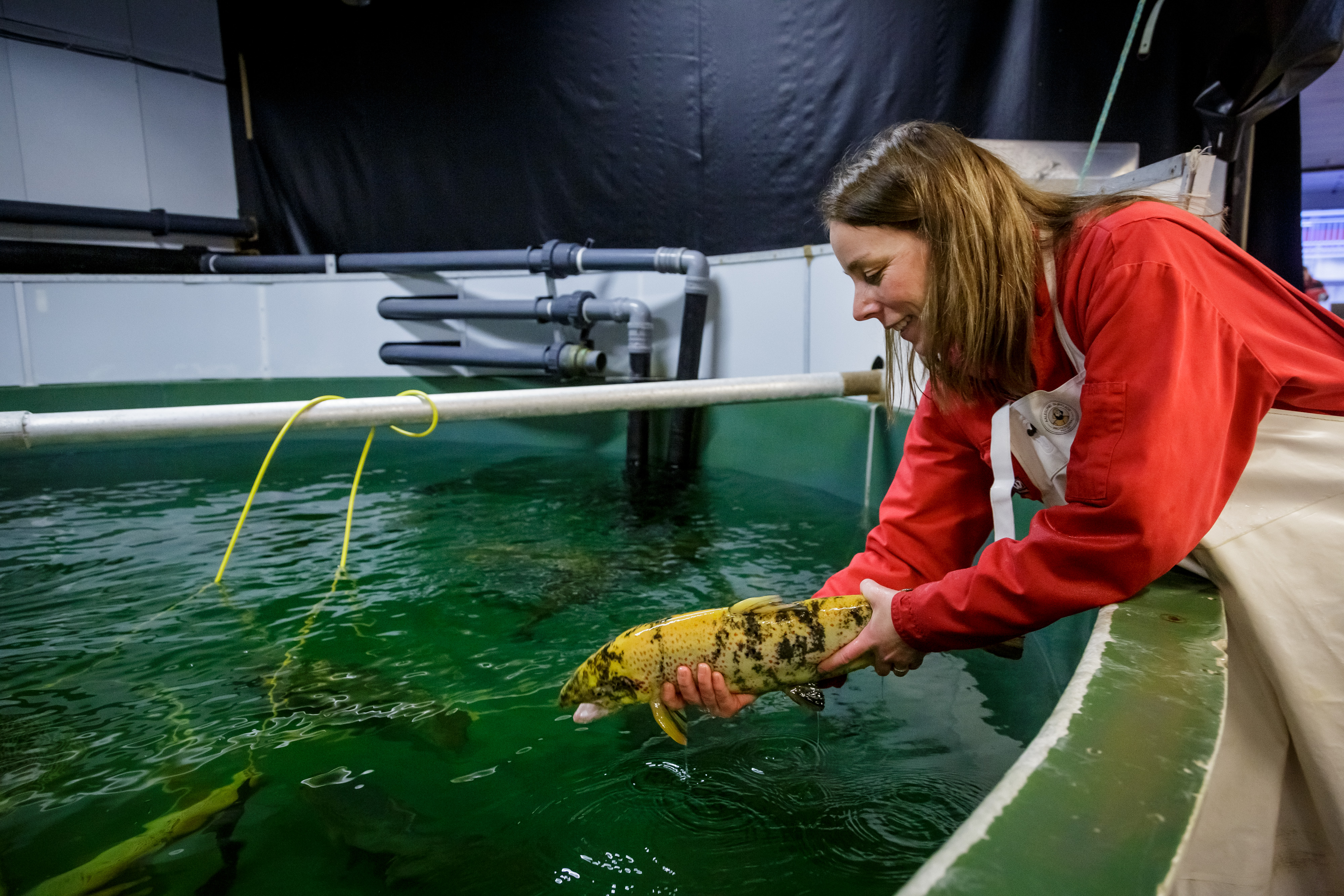Matre: 50 years of solving some of the most significant challenges in aquaculture

Matre lies where E39 meets Masfjorden and the Matre mountains.
Photo: Halfdan Hallseth / Institute of Marine ResearchPublished: 30.09.2021
If you drive north from Bergen on the E39 for an hour or so, you reach a long tunnel that descends steeply. Then you suddenly arrive in Matre. Here, at the end of Masfjorden, a research station was opened in 1971. Fifty years later it is the biggest employer in the village, giving work to 40 people at a world-leading research centre.
Because this tiny place between Masfjorden and the Matre mountains has contributed to significant results within salmon research over the past 50 years. In fact, many of its findings have had an enormous impact on the salmon farming industry in Norway and overseas.
Water from the power station
The key to its success is water. More specifically, water from the power station operated by BKK – Matre’s other big employer, along with the primary school.
“We have five sources of fresh water: four from the power station, and one from the River Matre”, says Ragnar Nortvedt.

He first moved to Matre with his family as a Master’s student in 1985, before returning as Research Station Manager in 2017.
“Access to the power station is absolutely vital; it’s our lifeblood”. Its cooling water is warm, so in the past it allowed us to perform experiments at a variety of water temperatures, which wasn’t usual in those days”, says Nortvedt.
Research halls and marine farms
The research station now has cutting edge facilities, and it can supply water at temperatures from 1 to 21 degrees.
“We have 381 fish tanks in our research halls, which allows us to perform a number of experimental studies in parallel”, says Nortvedt.
The water temperature, salinity, oxygen level, light regime and feed supply can be monitored and adjusted with an automatic control system. So the researchers can now control the experimental conditions from their computers. And observe how the fish react.
In addition, there are two marine farms a few cable lengths further out in Masfjorden.
“Our areas of research are very useful to the authorities and the aquaculture industry. We have a lot of researchers and projects looking at fish welfare, salmon lice, fish nutrition, population genetics and reproduction”, says Nortvedt.
The veteran: Tom
Some scientists only visit Matre for a few weeks or months to perform their experiments. Others remain for many years.
The person who has stayed longest is Tom Hansen.
“I came as a Master’s student in 1980, moved here in 1982 and got a permanent job in 1983”, he says.

Now he lives slightly up the hillside, just above the power station. From his house, he can see the research station.
“I’ve worked here for around 40 years, which shows what a fantastic place it is. There’s a good working environment, I like living in the country and my children have grown up here”, he says.
“And I also get to work on the things that interest me most in life. I have a lot of freedom to plan my own work and pursue my own ideas.”
World-leading salmon research
Hansen’s day-to-day work is on salmon genetics. In recent years, an important part of that has been what he calls “clonal lineages”.
“We produce salmon that are identical, rather like monozygotic twins. Except we can produce 3,000-4,000 completely identical fish”, he says.
Hansen, who was himself the Research Station Manager in the 1990s, has witnessed enormous changes at the research station over the 40 years he has been there.
“If you wanted to do a big research project when I came here, you almost had to get a new building and money for the facilities that were needed. Whereas now we have the best facilities in the whole world”, he says.
“These days you can just log on to your computer and decide what water temperature you want for the fish, the length of day, the salinity, the feed and so on.”

Speeded up production times
But has Matre actually produced any important research results? Absolutely.
When Tom Hansen came to Matre in the early 1980s, it took between 18 and 30 months from the eggs being fertilized until the salmon could be transferred to seawater.
“One of the first problems we took on when I started was how to make salmon production independent of the seasons. This had to be solved in order to greatly speed up the research process”, he says.
The first time the researchers at Matre tried to fix the problem in the 1980s, they fertilized the eggs in September and had fish ready for the sea cages in June. But that was too quick.
“In those days, all salmon smolts were transferred into sea cages in May and June, but the industry was interested in doing this at another time of year. It is like farmers sowing several crops a year to get more harvests. If they could transfer the fish into the sea between August and November, their production would be more spread out”, says Hansen.
When the researchers discovered the right amount of light and right water temperature, they managed to crack the code and found the perfect production time. This made the process quicker, but not too quick. Although some fish are moved earlier, it is now most common to transfer fish into the sea between August and October.
“These days, fish are generally transferred into sea cages when they are less than one year old. That has had an enormous impact on the global salmon industry. Suddenly, hatcheries could double or even triple their production, because it was much faster to produce the salmon”, says Hansen.

Light prevents sexual maturation
In the 1980s, the salmon farming industry also had big problems with sexual maturation. When a salmon reaches sexual maturity, the red colour moves from its meat to its skin, and most of the fat in the fillet is used up. Essentially, sexually mature salmon are useless for human consumption.
“Back then, 20-30 percent of the fish reached sexual maturity in the sea cages, so huge amounts of fish had to be discarded”, explains Hansen.
But the scientists at Matre found a way of preventing sexual maturation: using light in the cages.
“Today, this method is used throughout the world”, he concludes.
Future laboratories: the fjord and river
Even at 50, the research station has plenty of plans for the future.
“We have two marine farms, which are used to test submerged or closed sea cages, amongst other things”, says Research Station Manager Nortvedt.

In conjunction with that, scientists have mapped the seafloor topography of the inner part of Masfjorden. That has given them a better understanding of how feed waste and fish faeces can accumulate on the bottom of the fjord under various current conditions.
“We also plan to use Masfjorden as a fjord laboratory. In addition, researchers have suggested using the River Matre as a river laboratory, where we can do more research on escaped farmed salmon in rivers”, says Nortvedt.
He is also looking forward to the possibility of a new data centre being set up in Matre. That is being planned on account of the abundant local electricity, and it would generate large quantities of warm water. Which could then be used by the research station – particularly as a source of energy.
